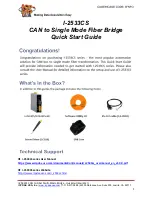
T-ABVA Manual |Rev.B, February 2016
Page 1
Introduction
The Apex Basic Velocity Alarm (ABVA) provides a cost-effective means for ensuring your laboratory fume
hoods and bio safety cabinets are operating within the appropriate velocity range for their intended
application. Lab occupants are alerted of potentially unsafe operating conditions by both audible and
visual alarms located on the front panel of the ABVA. The ABVA can also communicate alarms to remote
locations, such as the building automation system, and be commanded to
operate in “unoccupied mode”
from remote locations.
Features
•
Precise Measurement of Velocity using Mass Flow Sensor and 24-bit A/D Converter
•
Two Alarm Calibration Modes
•
Ultra Bright L.E.D.s to Indicate Status at a Glance
•
Loud Audible Alarm Provided by 90dB Horn
•
Remote Communication of Alarm Status
•
Unoccupied Mode Using Remote Mute Function
•
No External Reference Probe Required
•
Flush Mount or Surface Mount Installation
•
Simple Wiring Using Screw-less Terminals
•
Operates from Standard 120 VAC Using Wall Plug Power Module Provided
•
Side-
Mount Bracket Kit Available for Installing to “Box” Type Apparatus
•
Dual Hood Probe Kit Available for Large Fume Hoods
Prior to Proceeding
Before installing and calibrating your velocity alarm, you should be familiar with ANSI/ASHRAE
STANDARD 110 for proper methods of testing performance of laboratory fume hoods.
The following items are identified by ASHRAE as being important factors contributing to the safe
operation of laboratory fume hoods:
1. Cross-drafts. Air currents may, by creating turbulent air pockets, draw contaminants from the
hood. Such cross-drafts could be caused by air supply diffusers or grilles, open windows or doors, or
rapid movements of people in front of the hood.
2. Work procedures. There is substantial evidence to suggest that all work in a hood should be
conducted as far back in the hood as practical. Typically, users have standardized the requirement
that all work should occur at least 6 inches behind the face of the hood. However, significantly
improved protection can be achieved by working farther than 6 inches from the face of the hood.
3. Internal obstructions. The location of too much laboratory equipment (bottles, glass, etc.) in the
hood will disturb airflow patterns into the hood.
4. The procedure being performed. The intrinsic hazard of the procedure being performed can
affect the level of safety required by the user.
5. Thermal challenge. Heat produced in the hood can cause significant disturbance in the hood
performance and even cause leakage of warm and possibly contaminated air from the top of the hood
or from behind the sash.
6. Rate of response. The transient state or interval required for a variable-air-volume hood to
respond to a rapid opening of the sash, or the time interval required for a hood to respond to a
change in static pressure in the main exhaust duct serving multiple hoods, may affect hood
performance.


































